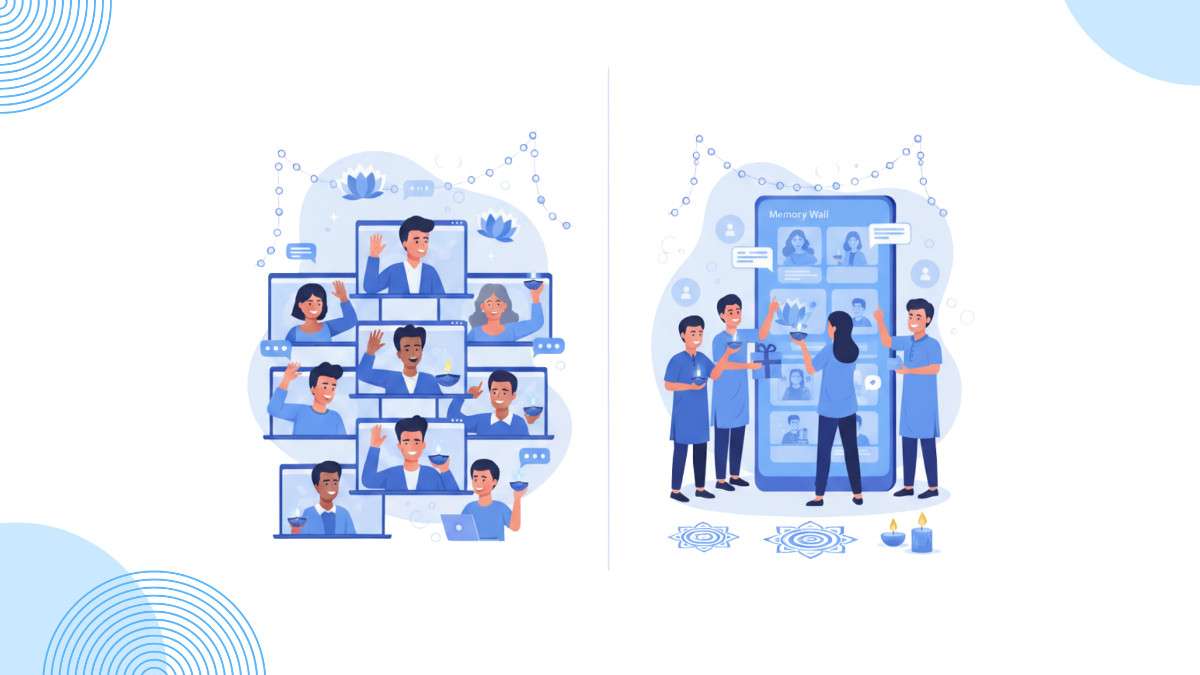How an Alumni Database Improve NIRF Ranking

In today’s digital era, relying on outdated methods like Excel sheets to manage alumni data is no longer practical or efficient. With alumni frequently changing jobs, locations, and contact details, studies reveal that approximately 22.5% of alumni data becomes outdated annually. This poses a significant challenge for institutions aiming to improve their NIRF rankings, as accurate and up-to-date alumni records are critical for showcasing graduate success.
A real-world example of overcoming this challenge is K.P.B. Hinduja College, which transitioned to a digital alumni platform in 2017. By leveraging AlmaShines, the college reconnected with over 5,000 alumni, gathered 1,200+ verified responses, and ultimately secured an NAAC A+ accreditation.
This success highlights the power of structured, tech-driven alumni engagement for NAAC accreditation and institutional growth.
A well-maintained alumni database not only ensures data accuracy but also enables institutions to track career achievements, highlight higher education pursuits, and strengthen their credibility.
The NIRF evaluates institutions based on several parameters, including Graduation Outcomes (GO), which account for 20% of the overall score. Within this category, metrics such as Placement & Higher Studies contribute 40% to the GO score, emphasizing the importance of tracking graduates’ employment and further education pursuits.
By systematically documenting alumni achievements, institutions can provide verifiable data on graduate success, directly influencing these critical NIRF metrics.
Why an Alumni Database Matters for NIRF Ranking
An alumni database is a commendable tool for higher education institutions that are working towards enhancing their National Institutional Ranking Framework (NIRF) rankings. It is a dynamic database that collects information about the professional success and academic growth of graduates, and this has a direct bearing on key ranking parameters like Graduation Outcomes (GO), Perception, and Outreach.
By systematically gathering and keeping track of alumni data, institutions can effectively market their graduates’ achievements in career placements, higher education pursuits, entrepreneurship, and leadership roles. This not only reinforces the legitimacy of the institution but also elevates its status and market standing in the ever-evolving higher education environment.
Impact of Alumni Database on NIRF Ranking
Improved Placement Reports – Following career advancement of alumni enables institutions to place emphasis on their employment rates, a prominent rankings’ driver.
Higher Studies Pursuits – Accreditation agencies place importance on statistics concerning alumni who go for higher studies, particularly from the most prestigious institutions.
Influence of the Industry – Entrepreneurs or senior alumni enhance the reputation of an institution.
Research & Partnerships – Active alumni participate in research, guest lecture sessions, and mentorship programs, enhancing the reputation of an institution.
Development of an Updated Alumni Database
Most of them use spreadsheets for tracking alumni, which are hard to maintain and draw data from. But with online alumni management systems, it can get easier.
How to Keep the Database Updated
Enable Self-Updates: Give alumni the option to self-update their profile through a portal.
Automate Data Collection: Employ LinkedIn integrations to monitor alumni career progressions.
Employ Surveys & Events: Collect data at alumni events, webinars, and networking sessions.
Fact: Institutions that have alumni portals have a 40% increase in engagement and data quality than institutions with older methods.
Alumni Tracking for Accreditation Success
Alumni tracking is far more than storing addresses. Institutions must keep track of where the alumni work, their job titles, their industries, and their geographic locations to make their accreditation reports stronger.
Advantages of Alumni Activity Tracking
Deeper Accreditation Reports: Institutions are able to highlight alumni success in business, government, and academia.
Targeted Engagement Strategies: Alumni locations are valuable in organizing regional alumni events and partnerships.
Placement & Internship Leads: Healthy alumni networks can assist current students in securing placements and internships.
Key Metrics to Track
Job information: Employer, job title, and industry
Geographic location: Country & city of residence
Career milestones: Promotion, entrepreneurship, impact in industry
Focusing on Alumni Pursuing Higher Studies
Most Indian students prefer pursuing higher studies in the top universities of the globe such as Harvard, Oxford, or Stanford. This is ranked and accredited as an indicator of success.
How Institutions Can Leverage This Data
Keep Higher Ed Data: Monitor alumni pursuing postgraduate and doctorate studies.
Identify Unique Successes: Employ alumni success stories in accreditation reports.
Establish Global Networks: Employ alumni as mentors to students. Based on fact, institutions that monitor alumni post-secondary education achievement have their academic reputation scores boosted by 30% when they undergo accreditation assessments.
Maintaining Data Accuracy and Integrity
Accreditation organizations consider credible and verifiable data. Institutions need strong mechanisms for ensuring data accuracy.
Methods of Sustaining Data Integrity
Regular Data Audits: Check data annually to purge outdated or inaccurate data.
Cross-Verify Information: Validate data using social media profiles and employer records.
Alumni Participation: Encourage and remind alumni to maintain their profiles.
Maximizing Alumni Data for Institutional Development
An updated alumni database improves NIRF ranking and serves as a key institutional growth strategy following accreditation.
How Institutions Can Leverage Alumni Data for Maximum Gains ?
Curriculum Development: Define professional trends from alumni career trajectories.
Funding & Sponsorships: Tap alumni for fundraising, endowments, and research support.
Marketing & Branding: Emphasize alumni success stories in admission campaigns.
Recruiting Alumni for Long-Term Benefits
A database will be only as effective as the relationships that are forged within it. Alumni engagement is the key to making data influential.
How to Develop Alumni Relationships ?
Organize Alumni Reunions: Arrange networking sessions, webinars, and mentorship programs.
Design Recognition Programs: Celebrate alumni milestones with awards.
Encourage Thought Leadership: Get alumni to provide guest lectures or be panelists.
Fun Fact: Active alumni engagement colleges and universities have 20-30% greater placement opportunities for students.
FAQs
Q1:How do alumni data assist in NIRF rankings?
A: Colleges that have properly recorded alumni report better placement percentages, industry contribution, and teaching contributions—all key metrics in NIRF rankings.
Q2: How to gather alumni database ?
A: Through the use of online alumni networks, or tracking platform and regular contact via events and surveys.
Q3: How often should institutions update alumni records?
A: Ideally, 22.5% of alumni data becoming outdated annually, records should be updated regularly through self-reporting, employer verification, and institutional outreach to maintain accuracy and enhance NIRF rankings.
Winding Up !
A well-managed alumni database is not just a prerequisite for accreditation—it’s a strategic tool that can drive an institution to top rankings, reputation, and connections. By harnessing technology, institutions can ensure accuracy in data, monitor alumni success, and foster lifelong relationships so that they enhance their NIRF rankings as well as enjoy a successful alumni community.
By investing in a quality alumni management system today, institutions are planting the seeds of long-term success for themselves and their alumni.
Suggested Blogs
Let’s discuss the idea
Join hundreds of companies transforming their corporate communities with Almashines






